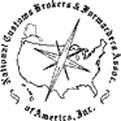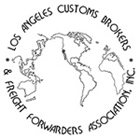Importing Flowers Into the United States
If you are currently importing or planning to import fresh cut flowers of any kind, it is important to work with a Customs Broker familiar with the special procedures and protocol that apply to cut flowers. Our licensed Customs Brokers are available to guide you through the process smoothly.
WHAT YOU SHOULD KNOW
The Plant Protection Act of 2000 provides the authority to prohibit or restrict imports, exports or interstate movement of plant pests, plants, plant products, noxious weeds, biological control agents and means of conveyance.
PPQ officers ensure that all shipments of imported cut flowers reach local florists free of pests and diseases by enforcing quarantine laws that require cargo to be inspected at the first port of arrival. Any shipment or portion of a shipment may be refused or be required to be treated if PPQ officers find pests of quarantine significance.
CBP Agriculture Specialists are specially trained in how to inspect cut flowers, plants and fresh herbs for signs of insects, pests or diseases. During the inspection, if an infested shipment is found, they will take a sample of the insect, pest or disease, complete an interception form which describes what they have found and identified and send it to a U.S. Department of Agriculture identifier. If the sample is not "actionable", the officer releases the shipment to the importer. If found to be .actionable., that is, not known to exist in the United States, or is an exotic invasive species detrimental to American agriculture, the shipment is ordered for fumigation, destruction or re-exportation under Customs Bond. If the importer chooses fumigation, treatments are performed at the risk and expense to the importer and must be performed under the supervision of an APHIS officer at a USDA approved facility. After fumigation, the officer releases the flowers to the importer and allows them to enter the country. If the entomologist determines the insect or pest is not harmful and poses no economic threat to U.S. agriculture, the officer releases the flowers to the importer. Similarly, if re-exportation under Customs Bond is chosen, this is done at the risk and expense of the importer.
The top three U.S. ports of entry that receive the most imported cut flowers are Miami, Los Angeles and New York. In a single shipment, CBP Agriculture Specialists working at any of these ports inspect samples representing up to 50 different varieties of cut flowers. The top three imported cut flowers are roses, carnations and chrysanthemums.
THE NATIONAL CUT FLOWER RELEASE PROGRAM
The purpose of the Release Program is to use pest risk analysis in processing agricultural cargo more effectively and efficiently by expediting the release of high volume, low risk cut flowers. Los Angeles is a Participating Port in this program. The flower and country combinations eligible for release under this program are:
Flower Type
Alstromeria spp. (Peruvian lily) Lilliaceae
Dianthus spp. (carnation) Caryophyllaceae
Gerbera spp. (Transvaal daisy) Asteraceae
Liatris spp. (blazing star) Asteraceae
Lilium spp. (lily) Liliaceae
Limonium spp. (sea lavender) Plumbaginaceae
Lisianthus spp. (Eustoma spp.)
Rosa spp. , Rosaceae
Rose bouquets(1)
Zantedeschia spp. (calla lily) Araceae
Country of Origin
Ecuador
Guatemala
Columbia, Costa Rica, Ecuador
Columbia, Dominican Republic, Ecuador
Columbia, Costa Rica, Dominican Republic, Ecuador
Ecuador
Ecuador
Columbia, Costa Rica, Ecuador, Guatemala
Columbia, Costa Rica, Ecuador
Columbia, Costa Rica, Ecuador
(1) Any bouquet that 75 percent of the stems in the bouquet, excluding greenery, are Rosa spp.
The risks associated with the importation of cut flowers are subject to change for a variety of reasons such as:
- The volume of flowers fluctuates annually
- The number and species of pests intercepted and population levels in growing areas are subject to change.
For these reasons the Release Program will be reviewed annually. The Release Program will also be subject to further evaluation as problems, i.e., significant pest findings or incidents of smuggling, etc. occur.>
THE FLOWER OF THE DAY
Any flower, including those qualifying for the National Cut Flower Release program, may be selected as the 'Flower of the Day'. If selected, the entire contents of at least one box of each flower/country combination from each grower must be inspected.
The local operations desk will advise the warehouse, airline or importer which low risk flower type (Flower of the Day), if any, will be inspected on that particular day.



Important Links